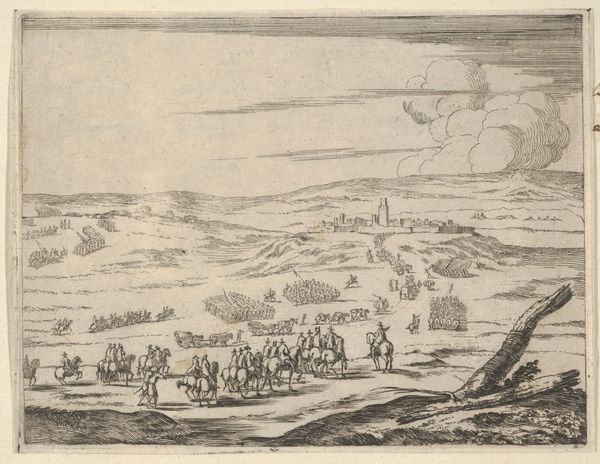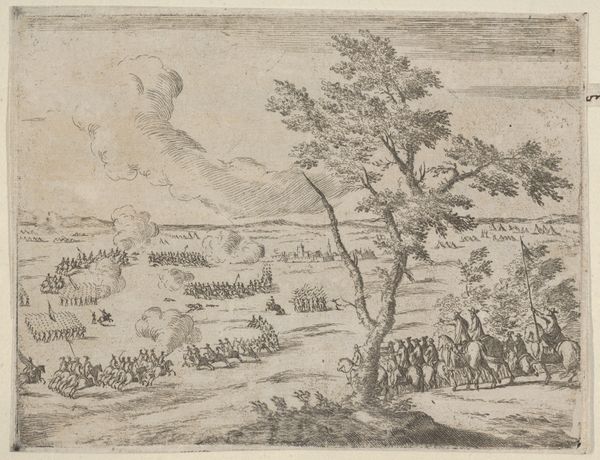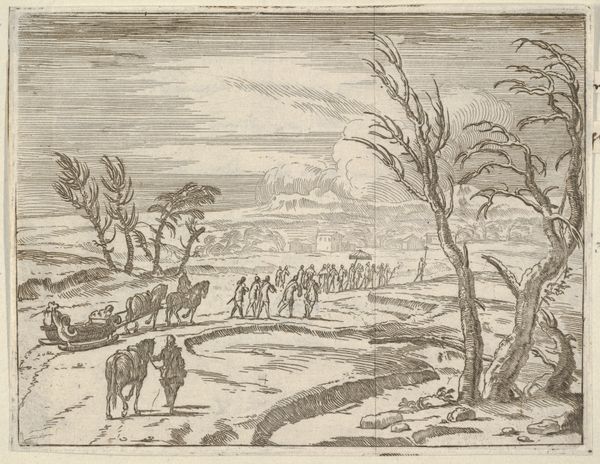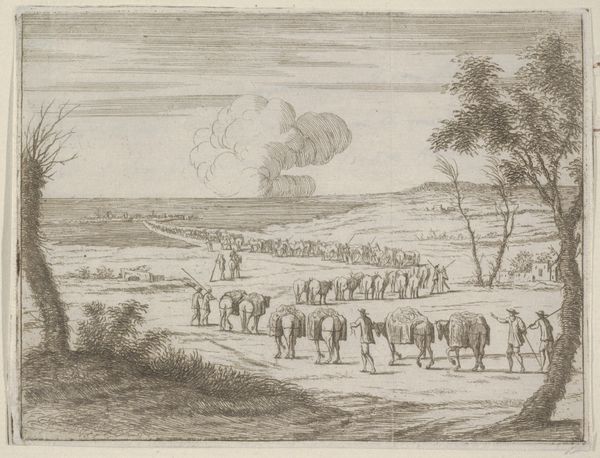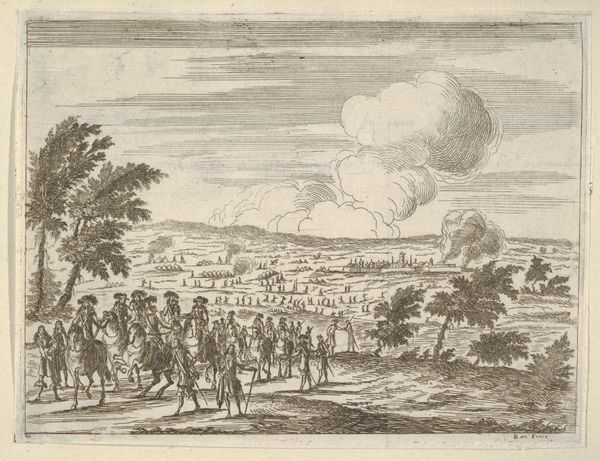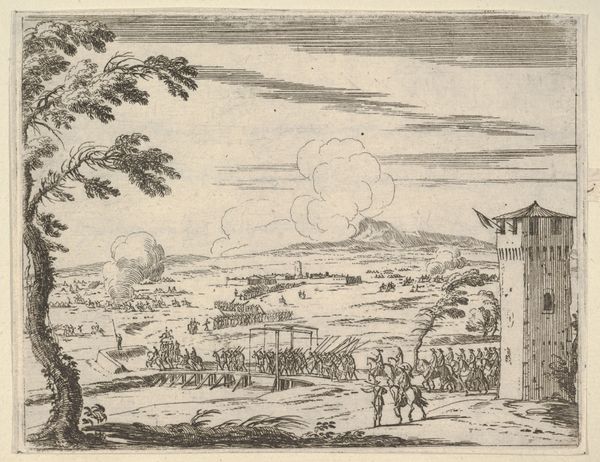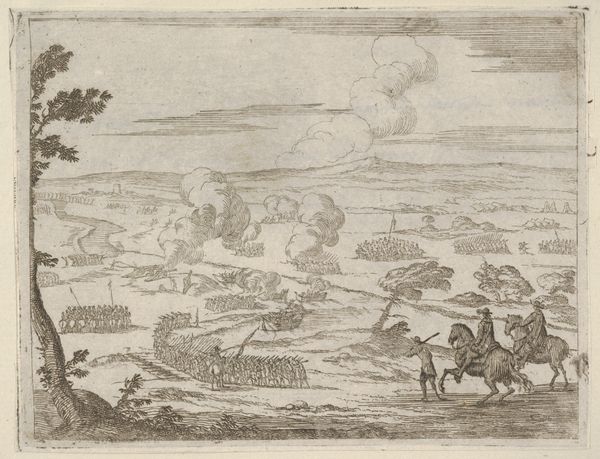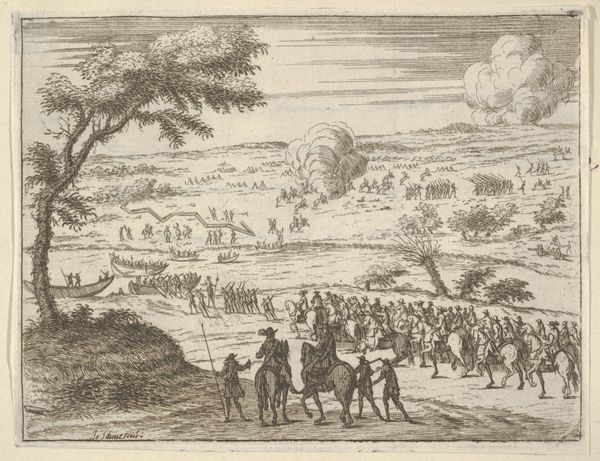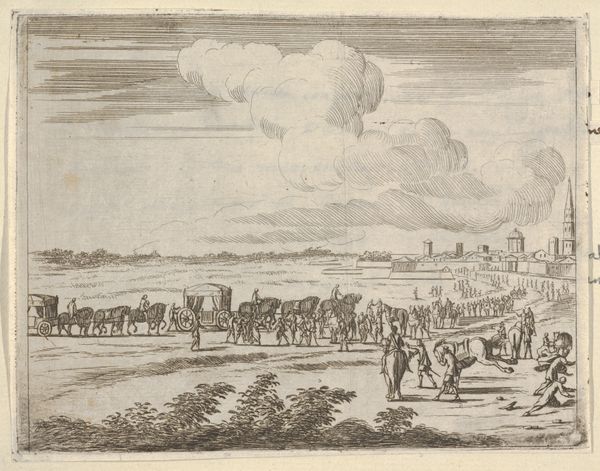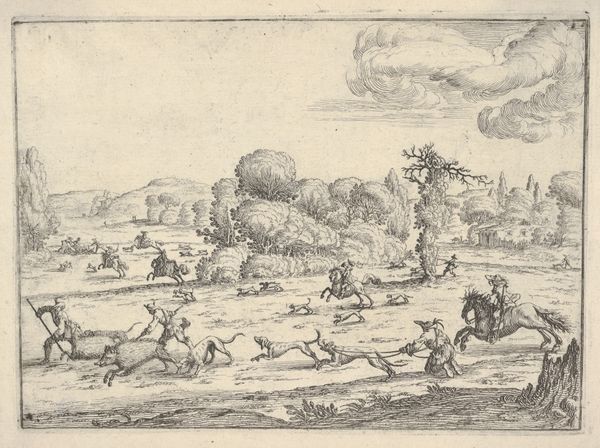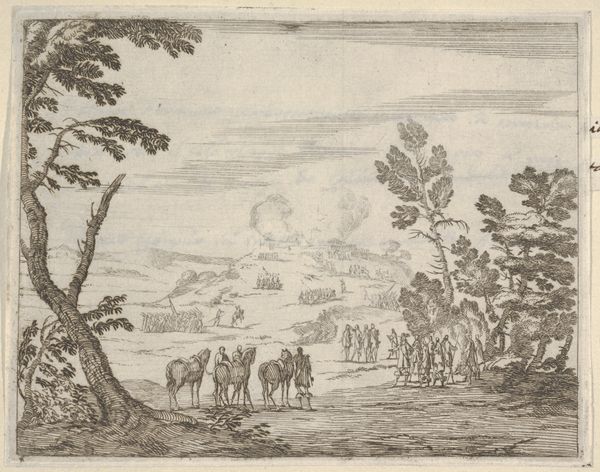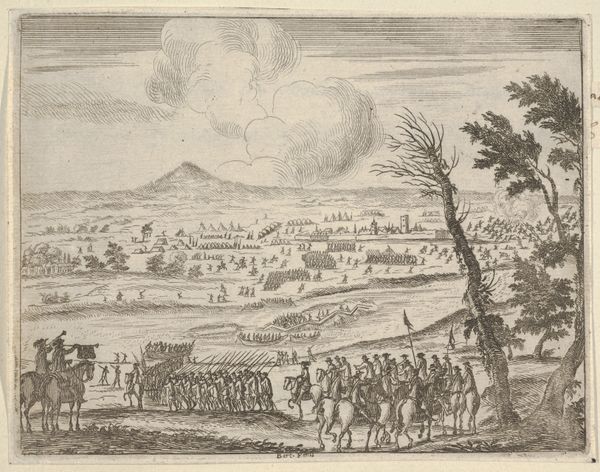![Following Francesco I d'Este's Example, His Troops Safely Pass Torrents During Extreme Weather, from L'Idea di un Principe ed Eroe Cristiano in Francesco I d'Este, di Modena e Reggio Duca VIII [...] by Bartolomeo Fenice (Fénis)](/_next/image?url=https%3A%2F%2Fd2w8kbdekdi1gv.cloudfront.net%2FeyJidWNrZXQiOiAiYXJ0ZXJhLWltYWdlcy1idWNrZXQiLCAia2V5IjogImFydHdvcmtzLzhhN2Q2MTVlLWE4NTItNDRlYi1iM2Y0LWQ4NGRlZjE0ZDY1MC84YTdkNjE1ZS1hODUyLTQ0ZWItYjNmNC1kODRkZWYxNGQ2NTBfZnVsbC5qcGciLCAiZWRpdHMiOiB7InJlc2l6ZSI6IHsid2lkdGgiOiAxOTIwLCAiaGVpZ2h0IjogMTkyMCwgImZpdCI6ICJpbnNpZGUifX19&w=3840&q=75)
Following Francesco I d'Este's Example, His Troops Safely Pass Torrents During Extreme Weather, from L'Idea di un Principe ed Eroe Cristiano in Francesco I d'Este, di Modena e Reggio Duca VIII [...] 1659
0:00
0:00
drawing, print, engraving
#
drawing
# print
#
landscape
#
soldier
#
horse
#
men
#
history-painting
#
engraving
Dimensions: Sheet: 4 13/16 × 6 5/16 in. (12.3 × 16 cm) Plate: 4 3/4 × 6 3/16 in. (12.1 × 15.7 cm)
Copyright: Public Domain
Editor: This engraving from 1659, by Bartolomeo Fenice, depicts troops crossing a torrent. It’s titled “Following Francesco I d’Este's Example…”. The landscape feels quite vast, almost barren, and it's dominated by this dramatic sky. I'm curious, what stands out to you about this piece? Curator: What interests me is the physical labor embedded in this image's creation. Think about the engraver, Fenice, meticulously carving lines into a metal plate, mirroring, and therefore re-staging, the labor of Francesco's troops navigating that very torrent. The *process* of making this print echoes the real-world efforts it portrays, blurring the line between artistic representation and documentation of a leader and his control over men and landscape. Editor: So you’re saying the *making* of the print itself has something to say about power and work? Curator: Precisely. Look at the sheer volume of lines used to depict the sky, or the meticulous detail in the soldiers' uniforms. It highlights not just artistic skill, but also the time, labor, and therefore expense, involved in producing such an image. What might this suggest about the intended audience and its own access to luxury or resources? Editor: It seems intended for a wealthy audience, where the value is not in the depicted action, but in showing how it *can* be illustrated, a material object to affirm Este's control. Curator: Exactly. The print, then, isn’t merely a historical record; it's a commodity, imbued with socio-economic meaning through the labour involved in its creation. A very deliberate creation, that reflects and propagates power dynamics. Editor: I never thought about it that way. I was focused on the event. This makes me rethink what it means to depict history through material objects. Curator: Indeed! By shifting our focus to the materiality and labor embedded in artworks, we can uncover so much about their cultural and historical context.
Comments
No comments
Be the first to comment and join the conversation on the ultimate creative platform.
